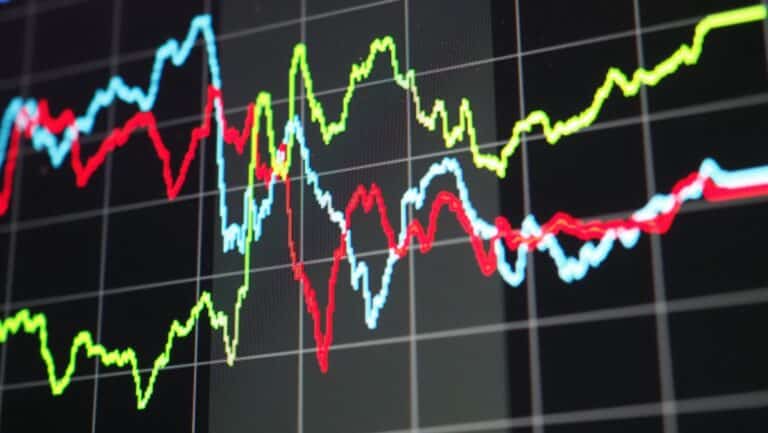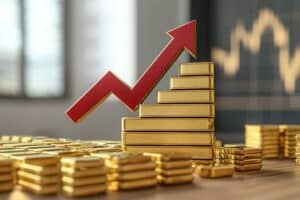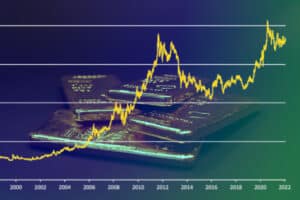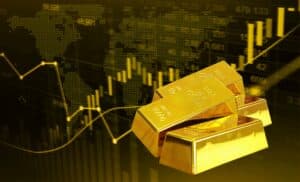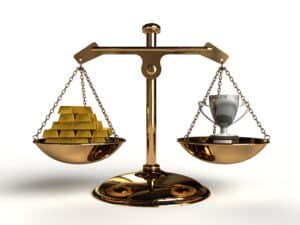Understanding the pricing of gold and silver requires a mix of economic principles, market psychology, and the unique characteristics that set these metals apart. Gold has long been considered a safe haven and often appreciates during times of economic uncertainty. While silver is also a precious metal, it has a more volatile price pattern due to its wider industrial application and smaller market.
Investing in gold and silver is a traditional method of hedging against inflation and diversifying investment portfolios. While the two metals sometimes move in lockstep, there are times when the price of silver either outperforms or underperforms the price of gold, depending on market dynamics and demand cycles. For investors looking to navigate the precious metals market, it’s important to understand the science behind the prices.
The Fundamental Drivers Of Precious Metals Pricing
For anyone interested in the precious metals market, it is important to understand the factors that influence pricing. The prices of precious metals such as gold and silver are determined by a complex interplay of various elements, ranging from economic indicators to the actions of central banks.
Economic Indicators And Market Dynamics
Inflation rates often correlate with changes in the price of gold, as gold is generally seen as a hedge against inflation. In times of high inflation, investors may flock to gold, driving up its demand and price. Conversely, in times of deflation, the price of gold can fall as demand decreases.
Another important aspect of market dynamics is the supply and demand equation. Events that disrupt mining operations, such as natural disasters or strikes, can reduce supply, which can cause prices to rise if demand remains the same. On the other hand, technological advances that make mining more efficient can increase supply, which can lower prices if demand does not increase accordingly.
The strength of the US dollar also plays a role, as precious metals are usually priced in dollars. When the dollar weakens, gold and silver prices in other currencies become cheaper, increasing demand and prices. Conversely, a strong dollar can make gold and silver in other currencies more expensive, which reduces demand and puts pressure on prices.
Roles Of Central Banks And Institutional Investors
When central banks are net buyers of gold, they can drive up the market price. Central banks can buy gold to diversify their reserves or to respond to economic uncertainties.
Institutional investors such as hedge and pension funds also play an important role. As they manage large portfolios, their investment decisions are closely watched by the market, and they can significantly influence precious metal prices. By increasing their holdings in precious metals, institutional investors can exert upward pressure on prices.
These investors monitor various economic factors, from GDP growth rates to interest rate movements, to make informed decisions. For example, lower interest rates can make low-yielding assets such as precious metals more attractive, which can increase demand and price. On the other hand, when interest rates rise, the opportunity cost of holding non-yielding assets increases, which can reduce their attractiveness and price.
Supply And Demand Factors
The subtleties of supply and demand dynamics significantly influence the pricing of gold and silver. These precious metals are traded on the investment market and are central to various industrial applications, determining their perceived value.
Mining And Production Of Metals
Mining companies measure the extraction of these metals in terms of geological scarcity and operating costs. If mining activity increases, this can lead to an increase in supply, albeit often with a delay, as it takes a long time to bring new mines into production. Thus, the availability of silver is influenced not only by silver mines but also by its status as a by-product in the extraction of other metals.
Past production statistics show that production levels are directly related to market availability and influence price fluctuations. Over the years, reduced discovery rates and higher production costs have further contributed to gold and silver supply constraints, which can drive up prices while demand remains steady.
Consumer And Industrial Demand
Gold jewelry is still an important market whose demand is influenced by cultural and economic factors, which in turn impacts prices. In addition to jewelry, gold’s use in electronics continues to generate industrial interest due to its conductive properties. Similarly, silver is in high demand in the industry due to its versatility, e.g., as an antimicrobial coating for medical devices and as a heat conductor in technical applications.
These industrial uses create a base demand, which, combined with investment trends, leads to price fluctuations. Technological advances that lead to new uses for these metals can rapidly increase demand and drive up prices, especially when supply is insufficient. Conversely, economic downturns often dampen consumer spending and industrial production, leading to lower demand and prices while supply remains constant.
Market Behavior And Price Fluctuation Analysis
The pricing of gold and silver is dynamic and is influenced by several factors ranging from the global economic situation to market speculation. An accurate analysis of price fluctuations and market behavior requires a deep insight into historical trends and forecasting models while also taking into account the impact of traders’ speculative actions.
Historical Data And Predictive Modeling
Patterns have shown that the gold-silver ratio—the number of silver ounces needed to purchase an ounce of gold — has fluctuated considerably. For example, the ratio has fluctuated between around 30 ounces of silver for an ounce of gold in 2011 and around 120 ounces in 2020. This historical range suggests that market conditions, including inflation and economic stability, play a large role in determining the price ratio between these two metals.
Predictive modeling uses this historical data to forecast future price trends. Techniques such as the Bayesian structural time series model and the STL-ETS approach are used to adjust and predict the fluctuation trends of gold price returns. These models, which can also incorporate variables such as crude oil price shocks, help to map the potential direction of precious metal prices under different market conditions.
The Role Of Speculation In Precious Metals
Speculation in the precious metals market is a powerful force that can cause rapid and significant price changes. Speculators base their trading strategies on a mixture of analytical data, market news, and economic forecasts. Their behavior often anticipates or reacts to inflationary pressures or deflationary signals, influencing the short-term relationship and volatility of gold and silver prices.
While long-term investors tend to rely on the intrinsic value of precious metals and macroeconomic trends, it’s speculators who often add liquidity and volatility to the market. They constantly assess market conditions, including supply and demand, geopolitical stability, and changes in currency values. In this way, they contribute to the complex interplay that determines the moment-to-moment pricing of gold and silver.
Technological Advancements And Industrial Applications
The value of gold and silver is strongly influenced by their technological applications and advances in mining and refining processes. Fueled by their use in various technological and production capacities, industrial demand for these metals is important in their pricing.
Innovations In Mining And Refinement
Automated machinery and sophisticated energy management systems have streamlined processes, leading to higher yields with less waste. In the area of gold extraction, developments such as bioleaching and the use of non-toxic leaching act as a catalyst for more sustainable processes.
Advances in refining have also had a significant impact. High-precision analytical technologies are helping to extract metals with a purity of 99.999%, which is crucial for their use in high-tech applications. These processes are also recovering metals from industrial waste, contributing to a circular economy in the manufacturing sector.
Precious Metals In Manufacturing And Technology
Gold and silver are indispensable in electronics due to their excellent conductivity and corrosion resistance. Gold is used, for example, to manufacture plugs, switches, and relay contacts in various electronic devices. This industrial demand is reflected in the electronics sector, which consumes considerable quantities of these metals every year.
These metals are used in the production of various technical products. Silver’s thermal and electrical conductivity makes it necessary for photovoltaic cells for solar panels, directly linking the precious metal to the renewable energy industry. Gold’s role as a catalyst in chemical reactions is important in the automotive industry for emissions control and in producing high-density storage media.
The applications of gold and silver as components in technological advancements and industrial applications underscore their continued demand. As industries continue to evolve, the demand for these precious metals in various sectors could further impact their market value.
Hedge Against Market Volatility With Precious Metals
Are you looking for a way to hedge against market volatility and be prepared for economic downturns? Gold, silver, and other precious metals make for an excellent hedge against inflation and other financial threats the market may throw at you. With Noble Gold Investments, you can buy gold and silver to store at home or buy gold in a tax-advantaged IRA to save for retirement.
Call Noble Gold Investments today at (877) 646-5347 to speak with one of our account managers, or click here to open an account today.


